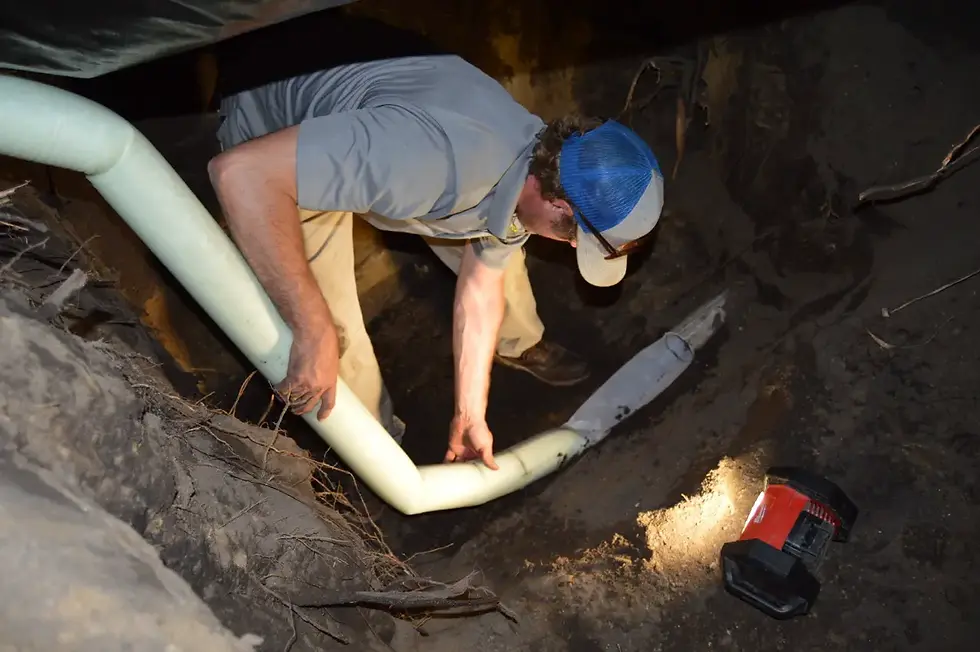Modern Solutions for Sewer Repair and Maintenance in Ohio
- cprdrainrepair
- Jul 22
- 4 min read
Maintaining a home's plumbing system is vital for safety, comfort, and property value. For Ohio residents, issues like clogged drains, damaged sewer lines, or unexpected backups can cause significant disruptions. Fortunately, advances in plumbing technology have made it easier and more efficient to address these challenges sewer backup help without major excavation or lengthy repairs. Today’s methods offer practical, durable solutions that keep homes functioning smoothly.
This article explores the latest approaches to repairing sewer lines, cleaning drains, and handling backups in Ohio. It explains how trenchless sewer repair, pipe lining, and professional drain cleaning work. These options deliver reliable results with less mess and faster turnaround than traditional methods.
Understanding Common Sewer and Drain Problems in Ohio
Sewer and drain issues can arise from many causes, including aging infrastructure, soil movement, tree root intrusion, and improper disposal habits. Homeowners in Ohio face some unique challenges due to the state’s seasonal weather changes and soil conditions.

Typical problems include:
Sewer pipe cracks or breaks: Over time, clay or cast iron pipes can crack or corrode, leading to leaks or blockages.
Tree roots invading pipes: Roots seek moisture and often penetrate small cracks, causing blockages or pipe damage.
Drain clogs: Grease, hair, soap buildup, or foreign objects can block drains.
Sewer backups: When pipes are blocked or damaged, wastewater can back up into basements or yards, posing health risks.
Recognizing these issues early is crucial. Ignoring warning signs like slow drains, unpleasant odors, or wet spots can lead to costly repairs and health hazards.
Trenchless Sewer Repair: A Minimally Invasive Approach
Traditional sewer repair requires digging extensive trenches, disrupting landscaping and hardscaping. In contrast, trenchless sewer repair minimizes excavation by using advanced technology to fix pipes from within.
How Trenchless Repair Works
A professional plumber inserts a small camera into the pipe to locate damage. Then, using one of two common methods—pipe bursting or cured-in-place pipe (CIPP) lining—the damaged section is repaired or replaced without major digging.
Pipe bursting: A bursting head breaks the old pipe apart while simultaneously pulling a new pipe into place.
CIPP lining: A resin-saturated liner is inserted into the pipe and cured, creating a seamless, durable new pipe inside the old one.
Benefits for Ohio Homeowners
Reduced damage to yards, driveways, and sidewalks.
Faster completion times, often in a single day.
Long-lasting results resistant to root intrusion and corrosion.
Cost savings compared to extensive excavation.
This method is especially beneficial in Ohio’s urban and suburban areas, where digging can disrupt homes and streets.
Pipe Lining: Reinforcing Pipes Without Replacement
Pipe lining is a specific trenchless technique that restores the integrity of existing pipes by creating a new internal pipe layer. It is highly effective for sewer lines showing signs of cracking, corrosion, or minor collapse.
The Process of Pipe Lining
A flexible liner coated with resin is pushed into the damaged pipe through access points like a cleanout. The liner is then inflated and cured with heat or ultraviolet light. Once hardened, it forms a smooth, jointless pipe within the old pipe.
Why Pipe Lining is Trusted
Pipe lining extends the life of sewer lines by 50 years or more. It prevents leaks, root intrusion, and corrosion, improving flow and reducing blockages. Its non-disruptive nature suits Ohio’s climate and soil conditions, which can complicate open trench repairs.
Professional Drain Cleaning: Preventing Blockages Before They Occur
Regular drain cleaning is vital to avoid costly sewer problems. Over time, debris builds up in pipes, slowing drainage and creating conditions for backups.
Modern Drain Cleaning Techniques
Experienced plumbers use powerful tools like hydro-jetting and video inspection to thoroughly clean drains:
Hydro-jetting: A high-pressure water stream removes grease, scale, and roots from pipes.
Video inspection: Cameras identify blockages and pipe conditions to target cleaning accurately.
Advantages for Ohio Homes
Routine professional cleaning reduces the risk of sudden clogs and backups. It can prolong the life of plumbing systems, improve water flow, and enhance home safety by preventing sewer gas leaks.
Sewer Backup Solutions: Protecting Homes and Health
Sewer backups can cause extensive damage and pose serious health risks due to contaminated water. Ohio homeowners should be aware of prevention and response strategies.
Common Causes of Sewer Backups
Blockages from grease, debris, or roots.
Heavy rainfall overwhelming municipal systems.
Pipe damage or collapse.
Steps to Manage Backups
Install backwater valves to prevent sewage from flowing back into basements.
Schedule regular inspections and maintenance.
Respond quickly to signs of backup with professional assistance.
Expert plumbers in Ohio specialize in emergency sewer backup services, minimizing damage and restoring normal function promptly.
Conclusion
Ohio homeowners benefit from advanced sewer repair and maintenance solutions designed to meet regional challenges. Trenchless sewer Trenchless technology repair and pipe lining offer efficient, durable fixes without disruptive digging. Regular professional drain cleaning helps prevent clogs and backups, while timely interventions safeguard homes from sewage damage.
By understanding these modern techniques, property owners can protect their investment and maintain safe, functional plumbing systems. Choosing experienced professionals with proven expertise ensures repairs last longer and cause less hassle.
Adopting these proven methods means fewer surprises and more peace of mind for Ohio families.


Comments